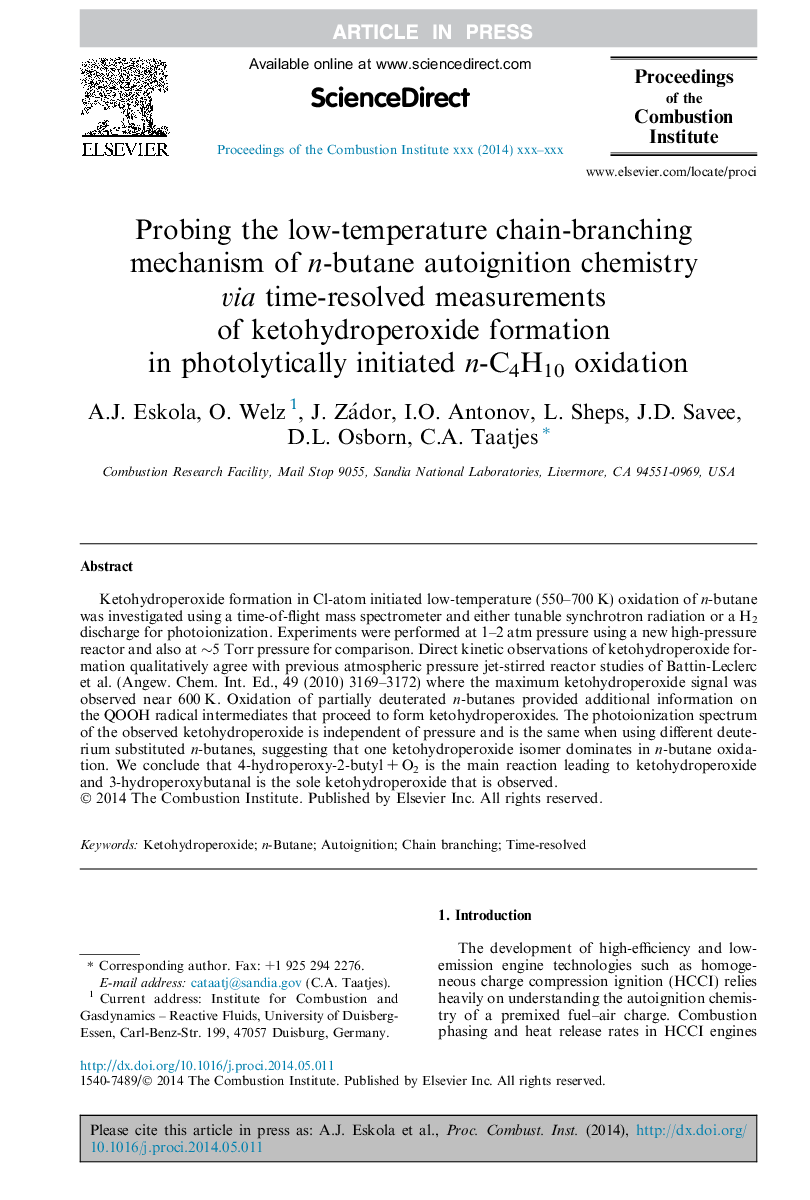| Article ID | Journal | Published Year | Pages | File Type |
|---|---|---|---|---|
| 6679253 | Proceedings of the Combustion Institute | 2015 | 8 Pages |
Abstract
Ketohydroperoxide formation in Cl-atom initiated low-temperature (550-700 K) oxidation of n-butane was investigated using a time-of-flight mass spectrometer and either tunable synchrotron radiation or a H2 discharge for photoionization. Experiments were performed at 1-2 atm pressure using a new high-pressure reactor and also at â¼5 Torr pressure for comparison. Direct kinetic observations of ketohydroperoxide formation qualitatively agree with previous atmospheric pressure jet-stirred reactor studies of Battin-Leclerc et al. (Angew. Chem. Int. Ed., 49 (2010) 3169-3172) where the maximum ketohydroperoxide signal was observed near 600 K. Oxidation of partially deuterated n-butanes provided additional information on the QOOH radical intermediates that proceed to form ketohydroperoxides. The photoionization spectrum of the observed ketohydroperoxide is independent of pressure and is the same when using different deuterium substituted n-butanes, suggesting that one ketohydroperoxide isomer dominates in n-butane oxidation. We conclude that 4-hydroperoxy-2-butyl + O2 is the main reaction leading to ketohydroperoxide and 3-hydroperoxybutanal is the sole ketohydroperoxide that is observed.
Related Topics
Physical Sciences and Engineering
Chemical Engineering
Chemical Engineering (General)
Authors
A.J. Eskola, O. Welz, J. Zádor, I.O. Antonov, L. Sheps, J.D. Savee, D.L. Osborn, C.A. Taatjes,
